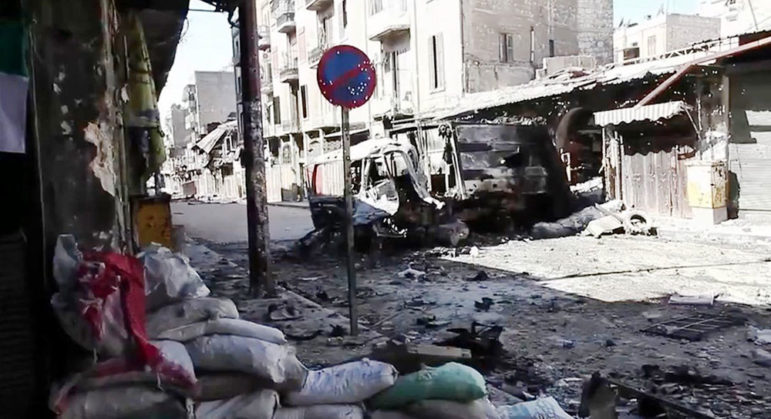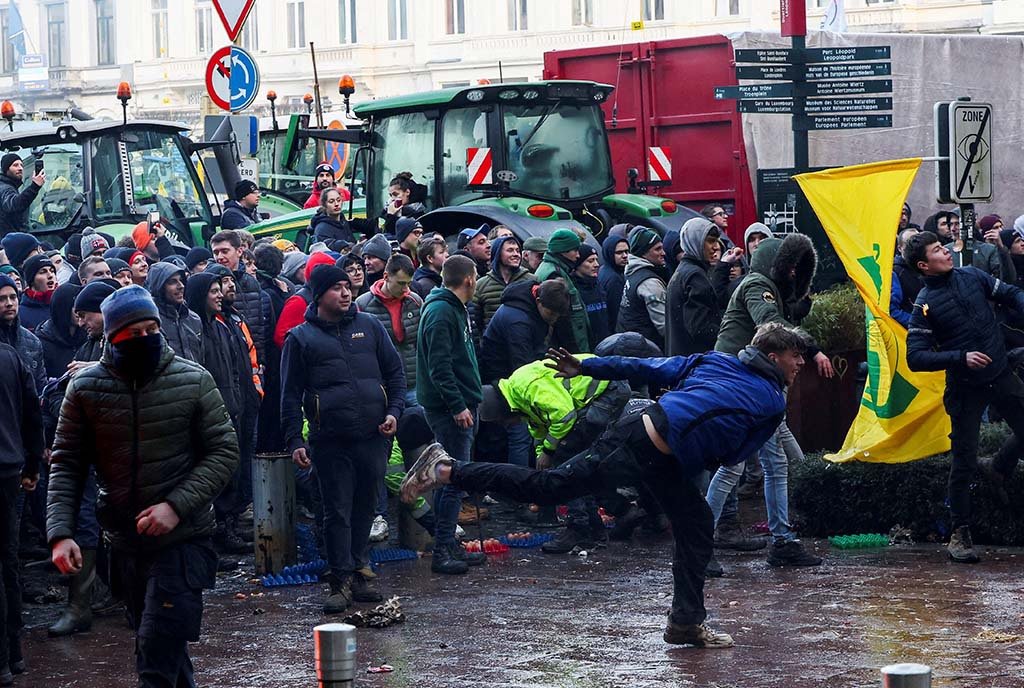
Ancient Aleppo, Syria’s largest city, had a population of more than 2 million before the onset of the Syrian Civil War. Since the Battle of Aleppo started in 2012, as the NPQ newswire reported then, “the challenges are immense for NGOs functioning amidst active warfare perpetrated by a regime that seems prepared to hold onto power regardless of the human costs.” Ever since, the Syrian government has used “starvation sieges” and much else as a weapon against its own people.
Aleppo split into the government-held west and the rebel-held east. Russia supports the Syrian government; America, Turkey, Saudi Arabia, and the Kurds support the rebels. We hope America is on the side of the angels, and the virtuous course is to fight President Bashar al-Assad’s regime. It would appear that Russia and Assad have abandoned diplomacy and are betting on a decisive military victory regardless of the cost in human lives and human decency.
Last week, breaking a shaky ceasefire, a convoy made up of Syrian Red Crescent trucks carrying UN-supplied food destined for a rebel-held area near Aleppo was targeted in an airstrike, killing at least 12 people and destroying 18 trucks. According to CNN, more than 200 air strikes struck rebel-held Aleppo this past weekend, killing more than 100 people and injuring hundreds more. The UN called the offensive “barbaric.”
According to Reuters, U.S. Secretary of State Kerry said, “Today there is no ceasefire and we’re not talking to them right now. And what’s happening? The place is being utterly destroyed.” Civilians, medical staff and aid workers are being killed. Only about 30 doctors are left in the city. In the last year alone, 11 MSF-supported medical facilities were bombed, killing some 23 medical staff.
“Aleppo city’s hospitals are overwhelmed with wounded people. […] Things are starting to run out,” said Aref al-Aref, an intensive care medical worker, who spoke from Aleppo. “We are unable to bring anything in…not equipment and not even medical staff. Some medical staff are in the countryside, unable to come in because of the siege,” he said.
Al Jazeera reported from a makeshift hospital, saying it was “overflowing” with the dozens of dead and wounded people. Bodies were strewn inside and outside the facility. An ambulance driver said, “It looks like judgment day.”
Sign up for our free newsletters
Subscribe to NPQ's newsletters to have our top stories delivered directly to your inbox.
By signing up, you agree to our privacy policy and terms of use, and to receive messages from NPQ and our partners.
At an emergency meeting of the UN on Sunday, U.S. Ambassador Samantha Power said, “What Russia is sponsoring and doing is not counter-terrorism. It is barbarism.” British Ambassador Matthew Rycroft said, “It is difficult to deny that Russia is partnering with the Syrian regime to carry out war crimes.”
Rycroft said that the deployment of such advanced and powerful weaponry as “barrel bombs” creates “a new hell” for the war-weary Syrians. The UN warned Russia that the strikes against civilians could amount to war crimes and called on world powers to “work harder for an end to the nightmare.”
The Syrian foreign minister, Walid al-Moallem, said in a television interview that the collapse of the ceasefire was the fault of the U.S., and that the UN’s condemnation of the recent Aleppo bombings were “shameful.” The Russian government is also unapologetic.
Russia’s government, which has called the military campaign a necessary response to terrorist groups in Syria, responded harshly on Monday to the criticism, warning that it carried the risk of further alienation between Russia and the West.
“We note the overall unacceptable tone and rhetoric of the representatives of the United Kingdom and the United States, which can damage and harm our relations,” Dimitry Peskov, a Kremlin spokesman, told reporters in Moscow on Monday.
On August 18th, the world’s attention focused on the horrific suffering being endured by Syrian civilians in Aleppo by looking into the face Omran Daqneesh, the five-year-old boy who survived an air strike on the apartment building where his family once lived. Omran was pulled from the rubble, miraculously still alive. His face was coated with blood and dirt as he sat in an ambulance staring silently in shock. The New York Times placed his image on its front page and then reflected on why the photograph went viral. Too often, it’s the image of a child’s suffering that moves the world to want to stop its madness. The barbarity in Aleppo is far from over, and apparently nothing short of a perceived victory will end the indiscriminate violence against children and adults alike.—James Schaffer













